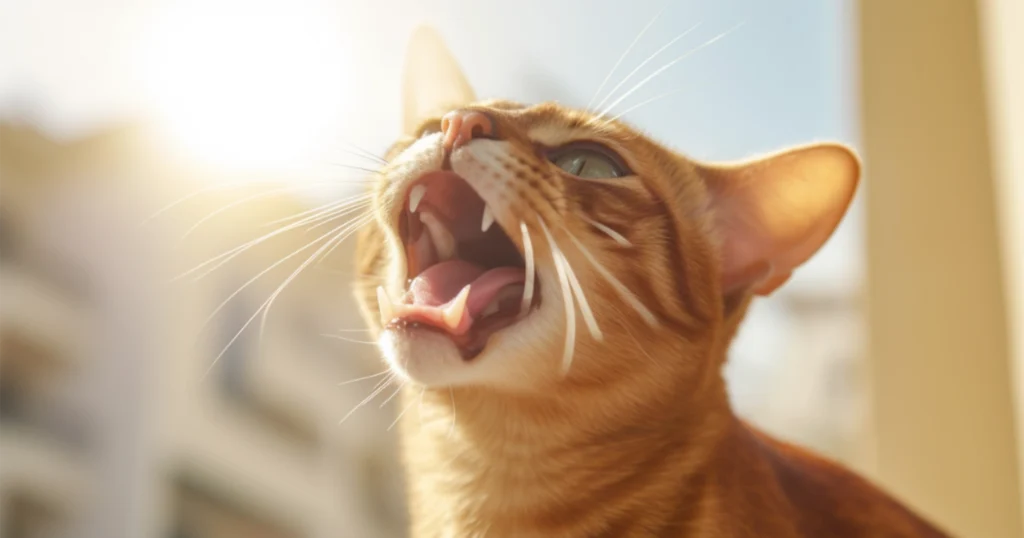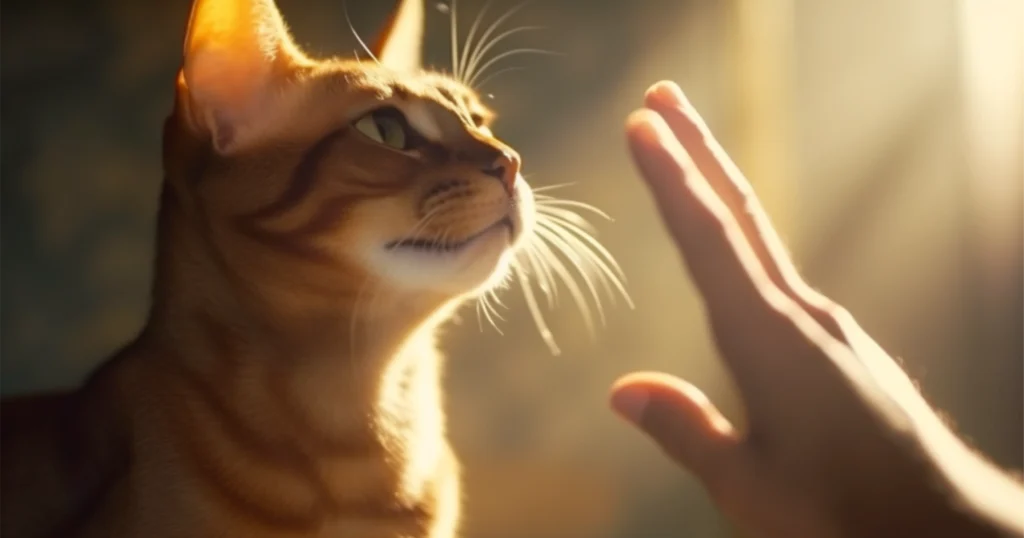When you welcome a cat into your life, you’re engaging with an entirely unique, fascinating world of communication. Feline friends may not share our language, but they definitely have their own expressive form, primarily embodied in “cat body language”. From the flick of a tail to the tilt of an ear, every movement your cat makes can provide insights into their mood, health, and overall well-being.
Understanding this nuanced language isn’t just about satisfying curiosity—it’s about fostering a deeper bond with your furry companions. Learning to “communicate with cats” through their body language means acknowledging their needs and emotions, reducing misunderstandings, and creating an environment of trust and comfort.
If you’re a cat owner or simply a cat lover, delving into the rich tapestry of cat body language can significantly enhance your interactions with these remarkable creatures. This article aims to guide you through this intricate form of communication, enabling you to comprehend and respond to your cat’s signals, thus bridging the gap between two different species, and nurturing a strong, loving relationship. So, let’s embark on this rewarding journey of discovery together!
Importance of Understanding Cat Body Language

Have you ever wondered why your cat purrs when you pet it or why its back arches at times? These are all subtle hints embedded in cat body language, the predominant mode of feline communication. By unlocking the secrets of cat body language, you become a more empathetic and responsive pet owner.
Cats, unlike humans, rely less on verbal communication and more on physical signals. Their bodies serve as expressive tools, narrating a story that words can’t convey. Every purr, hiss, arch, or curl can unveil their emotional state, whether they’re content, anxious, threatened, or seeking attention. Therefore, understanding this silent language is akin to having a direct line of communication with your cat.
Moreover, recognizing the nuances of cat body language can aid in proactive health management. Sudden changes in posture, unusual aggressiveness, or uncharacteristic withdrawal could be early signs of health issues. By being attuned to these subtle shifts, you can promptly address health concerns and ensure your cat’s well-being.
Why Cats Communicate Non-Verbally
Cats, like many animals, rely heavily on non-verbal cues to communicate. Born into a world without spoken language, these creatures have developed a complex system of body signals to express their needs and emotions. While they do make sounds – such as meows, hisses, and purrs – much of their communication revolves around physical gestures.
A cat’s body language communicates a wealth of information. From signifying comfort and happiness, to expressing fear or aggression, their bodies convey what words cannot. This silent dialogue, deeply ingrained in their natural behavior, is their primary mode of expression. Hence, understanding cat body language is vital to communicate effectively with our feline companions.
Impact on Cat-Owner Relationship
Understanding cat body language can significantly impact the cat-owner relationship. It’s like learning a new language that allows you to converse directly with your feline friend. By interpreting their body language, you validate their feelings, creating a bond based on mutual respect and understanding.
Recognizing when your cat is comfortable, anxious, or needs space helps avoid unwanted actions and reduce stress, fostering a more harmonious environment. Similarly, you can express your own emotions and intentions in ways that your cat can comprehend. Ultimately, understanding cat body language can result in a deeper, more connected relationship, enhancing the overall experience of pet ownership.
Decoding Cat Body Language

Entering the world of cat body language feels like stepping into an elaborate ballet performance. Each posture, tail twitch, ear flick, and sound plays a significant role in conveying a cat’s emotions and intentions. Let’s unravel these key elements of feline communication one by one.
Posture
In the dance of cat communication, posture speaks volumes. A relaxed cat, for example, often lays with its belly exposed, signaling trust and contentment. In contrast, a cat lying on its side may be preparing for defensive action.
A cat puffing up its fur and arching its back is universally understood as a sign of fear or aggression. This instinctive response, designed to make them appear larger to a perceived threat, is a clear indication of discomfort. Conversely, a cat sitting upright, with its feet tucked underneath, is in a relaxed and observant state. Paying attention to these shifts in posture can significantly enhance our understanding of cat body language.
Tail Position
A cat’s tail acts like a barometer for its emotional state. A high, straight-up tail often indicates a happy and confident cat, especially if it vibrates slightly at the end—a friendly hello in the feline world. A tail tucked underneath the body, however, usually signals fear or submission.
Tail thrashing or swishing can mean your cat is agitated or focused on an object of prey. A fluffy, bushed-out tail is typically a sign of alarm, fear, or surprise. Deciphering these tail positions is key to understanding how your cat is feeling and can guide you on how to communicate with cats more effectively.
Ear Orientation
A cat’s ears are like satellite dishes, always picking up signals and reflecting their mood. Forward-facing ears indicate interest or enjoyment, while sideways or back-facing ears often reveal annoyance or fear.
A cat with flattened ears against its head is usually expressing extreme fear or aggression. Noticing these ear orientations can provide insights into a cat’s current mood and alert you to any potential distress or discomfort.
Vocalizations
Even though cats rely heavily on non-verbal cues, they also communicate through an orchestra of sounds. Purring is commonly associated with contentment, but it can also be a distress signal when a cat is not well.
A growl or hiss, often accompanied by an arched back, signals a clear warning to back off. Meowing can mean a variety of things, from hunger to wanting attention—each cat often having a unique set of meows that their owners can learn to understand. Recognizing these vocalizations forms an essential part of decoding cat body language, fostering a better understanding and communication between you and your feline companion.
Practical Tips to Better Communicate with Cats

Unlocking the secrets of cat body language is a rewarding process that enhances the bond between you and your feline companion. But how do you apply this knowledge to communicate with cats more effectively? It’s all about observing, interpreting, and responding appropriately to their signals.
Observation Techniques
Firstly, take time to observe your cat in different environments and scenarios—while they’re playing, interacting with others, or simply lounging around. Notice the patterns in their postures, tail movements, ear positions, and sounds.
Remember, each cat is unique, and what applies to one might not apply to another. Therefore, keep a mental record of your cat’s specific behavior cues. For example, your cat might flick its tail when it’s playful, not agitated. Patient observation helps you learn your cat’s unique language and interpret it correctly.
Responding Appropriately
Responding appropriately to cat body language fosters trust and a stronger relationship. If your cat displays signs of fear or aggression, give them space and time to calm down.
Conversely, if your cat exposes its belly, it’s not always an invitation for a belly rub—many cats see this as a violation of their personal space. Instead, try a gentle stroke on the head or a chin scratch.
Respond to your cat’s vocalizations as well. A demanding meow might require immediate attention, while a purr would appreciate a gentle pet. Learning to respond appropriately shows respect for their communication, enhancing the mutual understanding and bond between you and your cat.
Conclusion
In essence, understanding cat body language is a game-changer for every cat owner. It’s like cracking a secret code, one that allows us to tap into the minds of our feline companions. We’ve dived into the significance of posture, the language of tail positions, the nuances in ear orientation, and the various vocalizations cats use.
And, importantly, we’ve explored how to effectively communicate with cats by observing, interpreting, and responding appropriately to these signals. As we foster this communication, we nurture a deeper, richer bond with our cats, transforming our coexistence into a truly harmonious ballet of non-verbal cues and responses.


